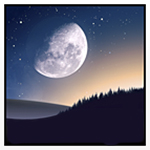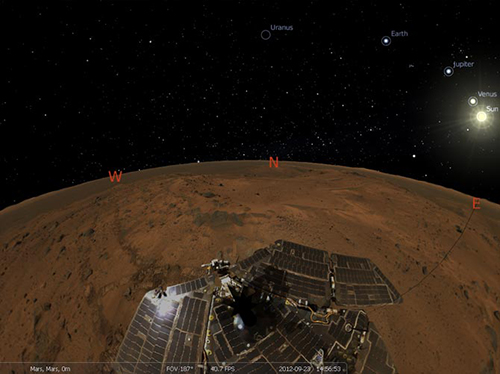Tools of the Trade: Stellarium
 Ever wonder what the sky above Mongolia looked like when Genghis Khan stared into the night? Was there a full moon to illuminate the fog of Whitechapel when Jack the Ripper prowled the streets? When a character swims across the Arctic Ocean, in a story set a thousand years in the future, what stars might she use to guide her passage westward? Stellarium can provide the answers.
Ever wonder what the sky above Mongolia looked like when Genghis Khan stared into the night? Was there a full moon to illuminate the fog of Whitechapel when Jack the Ripper prowled the streets? When a character swims across the Arctic Ocean, in a story set a thousand years in the future, what stars might she use to guide her passage westward? Stellarium can provide the answers.
Stellarium is free open source software that shows you what the sky looks like from any point in the world. Is your imagination bigger than the world itself? Stellarium offers views from the moon and several other objects in the solar system. Have a story that features a Martian colony in 2112? Would you be able to see Earth just after sunset? Simply select your location–present, past, or future–and take a look.
To be clear, the program is primarily an aid to observational astronomy. That bright star in the west–what’s its name? Wait, maybe it’s Venus… How far away is it? When will it set? Where’s Mars tonight? Find out with Stellarium; it’s the same program used by many planetariums.
As an open source project, additional scripts and functionality are offered by a community of supporters. Landscapes, light pollution, and weather effects like fog can be activated for additional visualizations.
Interested in Norse constellations? What shapes did the Navajo or Aztecs see in their skies? Stellarium can display fourteen different “sky cultures.” Short descriptions on associated myths accompany the cultural constellations. Fantasy writers take note: they’re both interesting and useful in generating worldbuilding ideas.
Should you wish to investigate before downloading, a Stellarium Wiki provides a list of features, FAQ’s, and help files.
Free, open source, and available for Linux, Mac OSX, and Windows. . . what are you waiting for? Grab a copy and unlock the skies.
•••
Have a tool, tip, or trick you’d like to share with other writers? Email Todd Vandemark, editor of the SFWA blog: webeditor@sfwa.org



